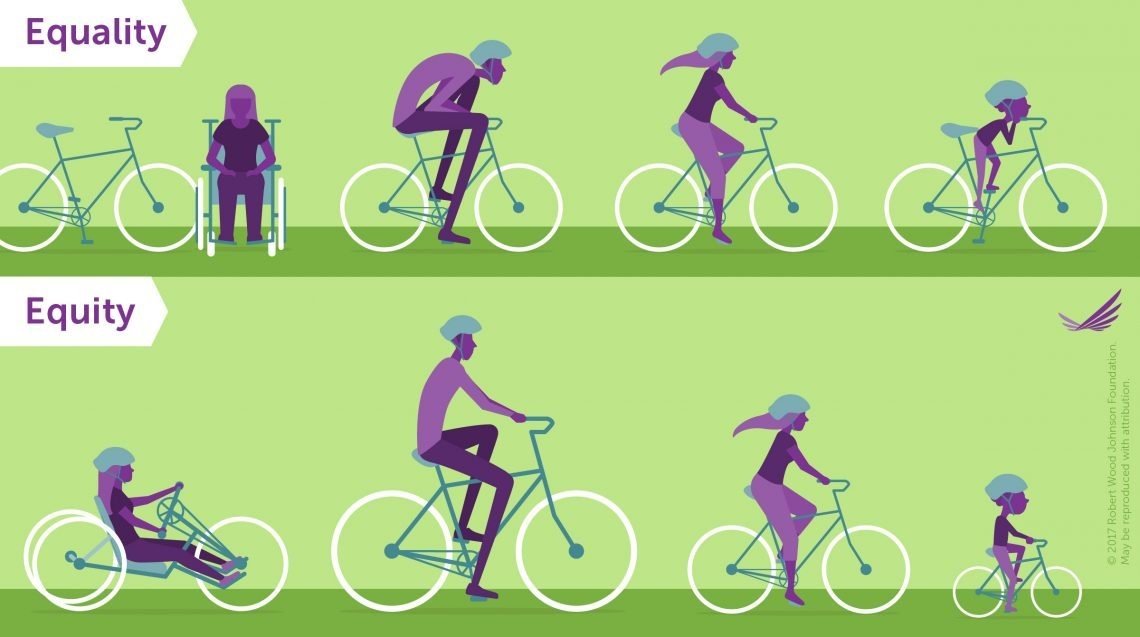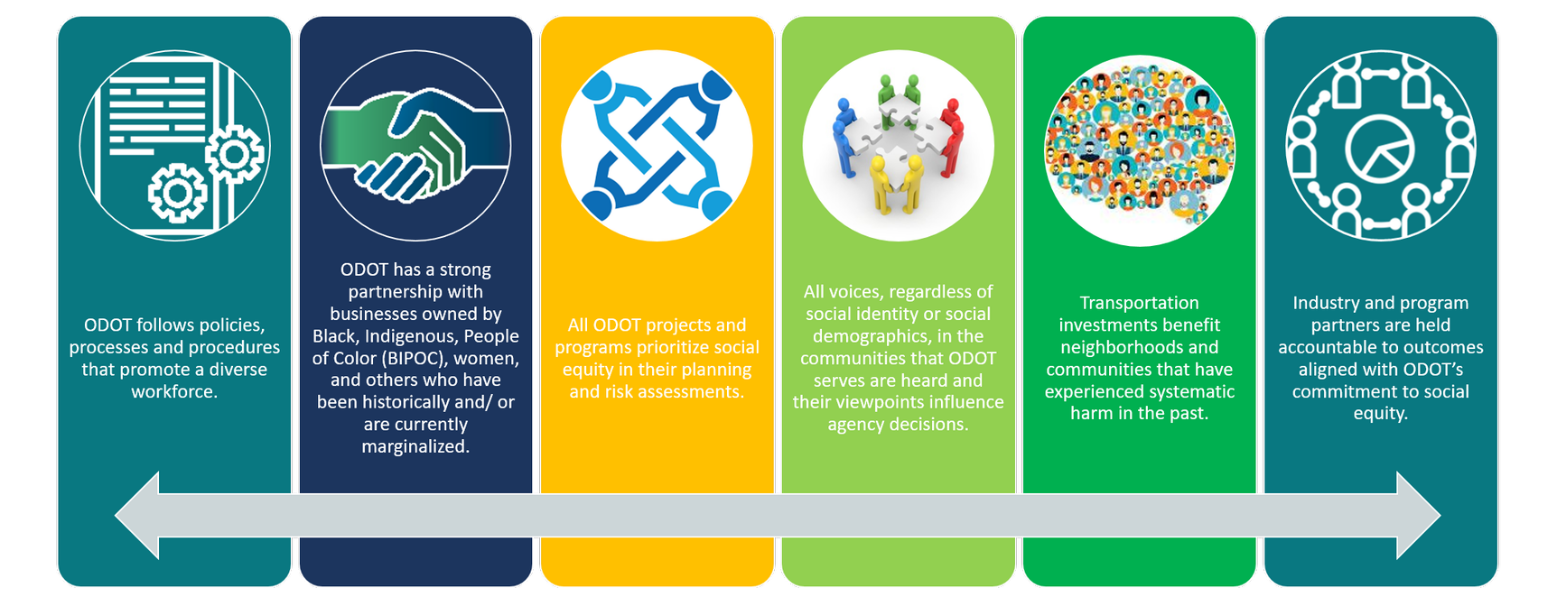
Resources
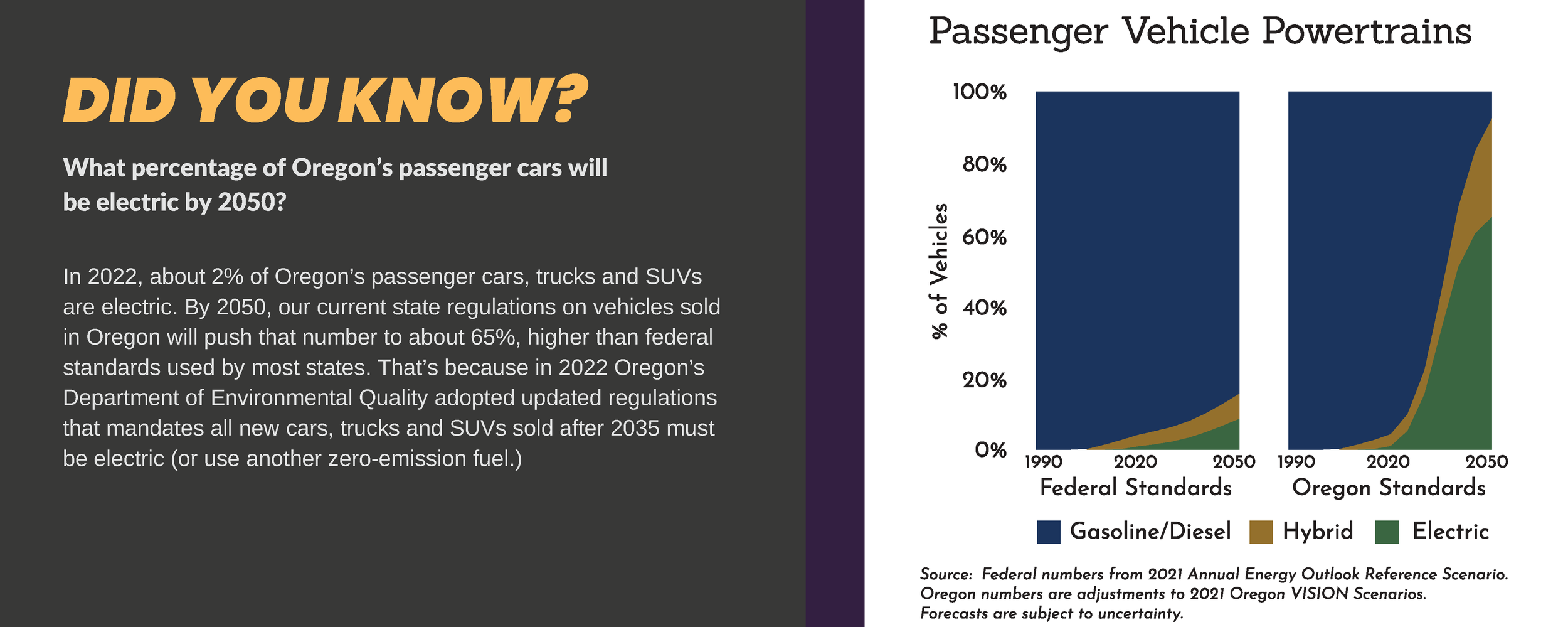
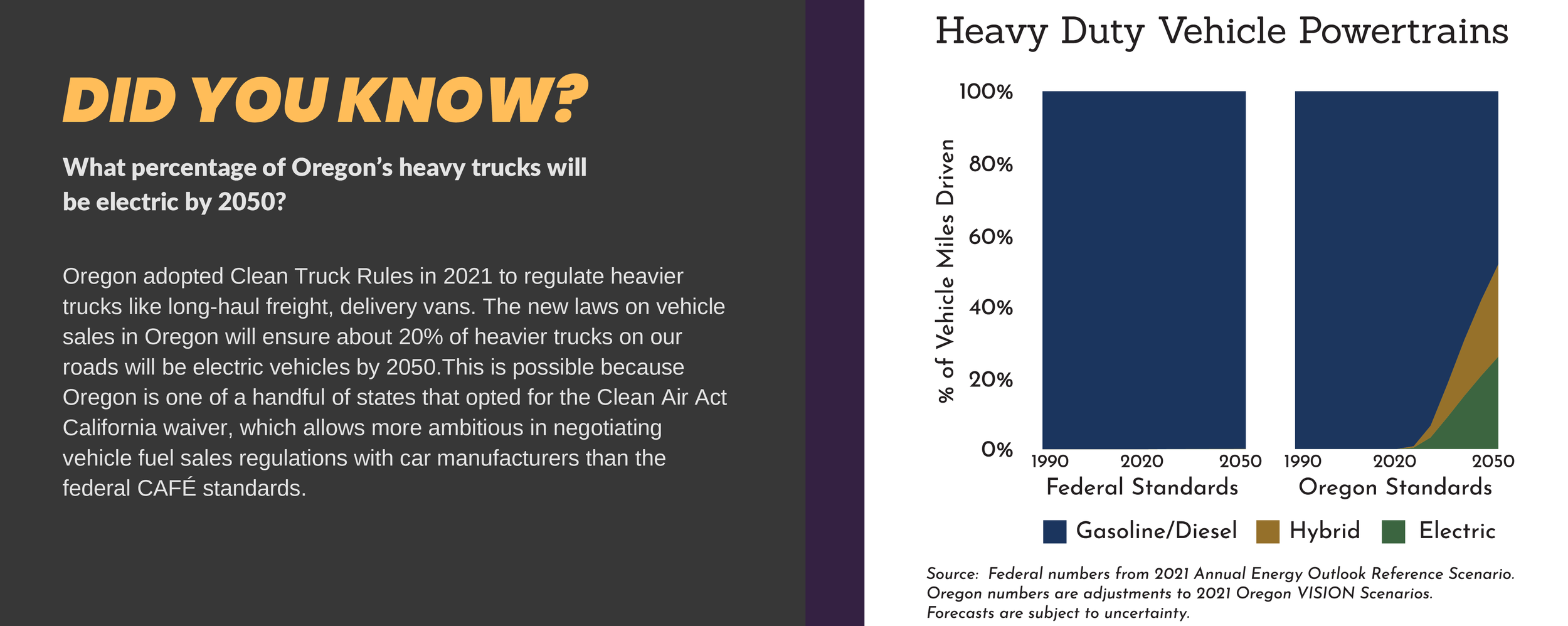

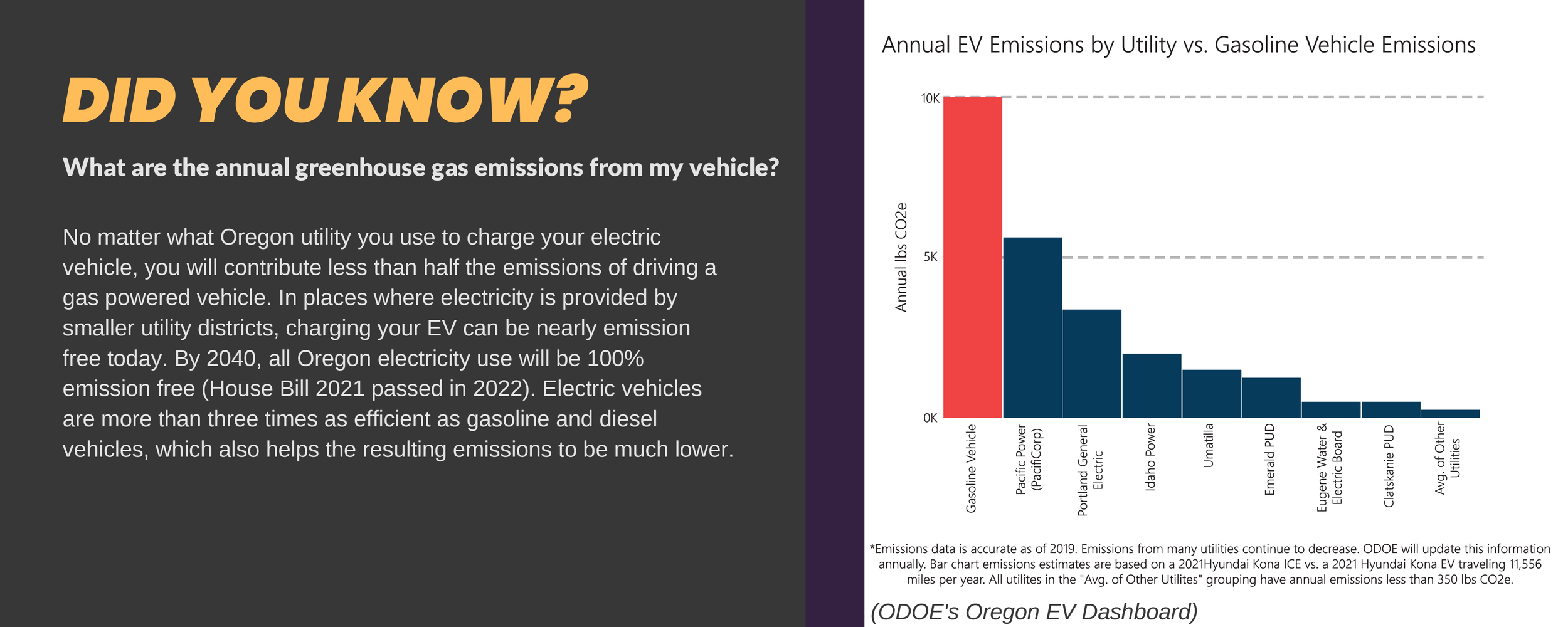

Social Equity and Emissions Reduction: A Shared Vision
Equity is the effort to provide different levels of support based on an individual’s or group’s needs in order to achieve fairness in outcomes. Equity acknowledges that not all people, or all communities, are starting from the same place due to historic and current systems of oppression. Equity actionably empowers communities most impacted by systemic oppression and requires the redistribution of resources, power, and opportunity to those communities.
State agencies work in coordination to reduce greenhouse gas emissions for the benefit of Oregonians, and beyond. This means making it easier for everyone to make safe and climate-friendly transportation decisions, and improving access to transportation investments and benefits.
For further information…
-
Statewide Transportation Strategy. A multi-year statewide planning effort written in 2012 that examines base and future greenhouse gas emissions from all aspects of the transportation system, including the movement of people and goods. It defined a consensus roadmap and a specific combination of strategies to reduce greenhouse gas emissions from transportation by 2050. Specific milestones for achieving each action are in the STS Technical Appendix 5. A 2018 STS Monitoring Report revisited the Statewide Transportation Strategy and gauged progress along the roadmap for meeting statewide greenhouse emission goals.
ODOT Strategic Action Plan. Oregon Department of Transportation’s three-year roadmap designed to accelerate change toward specific outcomes that address Oregon’s most significant transportation challenges.
Oregon Transportation Plan.The Oregon Transportation Plan is the long-range transportation system plan for the state. It sets policies, goals, strategies, and implementing actions for all the ways we move people and goods in Oregon. It informs investment decisions by ODOT, and regional and local governments, and is the framework that supports plans for each mode.
Oregon Freight Plan. This plan improves freight connections to support Oregon business and workers. The resources guides operation, maintenance and investments.
Every Mile Counts. A multi-agency approach to reducing greenhouse gas emissions and implementing the Statewide Transportation Strategy: A 2050 Vision for Greenhouse Gas Reduction.
ODOE Biennial Zero Emission Vehicle Report. Statewide report from the Oregon Department of Energy providing information on zero emission vehicles in Oregon, i.e. battery electric vehicles, plug-in hydrid electric vehicles, and others. Includes information on adoption rates, barriers and opportunities, and more.
ODOE Biennial Energy Report. Statewide report from the Oregon Department of Energy on energy production, use, costs, technologies, resources, efficiency, and energy-related greenhouse gas emissions. Includes transportation sector energy data and analysis.
-
Clean and Efficient Vehicle Technologies Overview. Basic information on electric vehicles, emissions associated with electricity, and where EV chargers are available and which vehicles they can charge up. Part of Oregon Department of Energy’s 2022 Biennial Energy Report.
Go Electric Oregon. An Oregon public webpage on all things EV, including incentives, benefits, charging, information for utilities and fleets, and EV news. A sub-page provides information about state and federal rebates for EV purchase or lease.
Oregon Electric Vehicle Dashboard. An interactive dashboard about Oregon EV registration data. View different geographic areas, vehicle types, ages, and associated lifecycle greenhouse gas emissions. Maintained by the Oregon Department of Energy.
Oregon Clean Vehicle Rebates Program. EV incentive program administered by the Oregon Department of Environmental Quality.
EV Incentives Dashboard. An interactive tool that shows data from the Oregon EV rebate programs, including number of applications, the amount of rebate money given, and more.
Zero-Emission Vehicle Interagency Working Group. Group tasked with implementing statewide goals to electrify vehicles, including EV charging infrastructure across the state. The group’s Zero-emission Action Plan outlines many ongoiong efforts.
The Oregon Medium- and Heavy-Duty Zero Emission Vehicles Action Plan. The Department of Environmental Quality’s action plan to electrify larger vehicles like buses, construction equipment, and long-haul freight trucks.
Medium and Heavy Duty Zero Emission Vehicle Incentives study. Joint report by the Oregon Departments of Environmental Quality and Transportation on how to incentivize the transition to cleaner medium- and heavy-duty vehicles in Oregon, and the need for infrastructure.
2022 Modal Comparison of Domestic Freight Transportation report. A report by the Texas Transportation Institute that provides good recent data on greenhouse gas emissions of different freight modes.
-
Transportation Fuels Overview. Overview of fossil and alternative transportation fuels including what they are, how they are made, carbon content, where they are available, and what vehicles they can fuel. Part of Oregon Department of Energy’s 2022 Biennial Energy Report.
Clean Fuels Program Report. 2022 report to the Legislature on the status of the Clean Fuels Program. It summarizes program progress, benefits, and impact of the program on fuel costs.
Energy 101: Oregon’s Petroleum-based Transportation Fuels. Overview of where fossil-based transportation fuels are extracted, transported, and refined. Includes the relative carbon intensity of different fuel sources.
Medium- and Heavy-Duty Fuel Options. A policy brief in the Oregon Department of Energy’s 2020 Biennial Energy Report that summarizes various fuel options and factors that influence the optimal alternative fuel given different vehicle types and use cases.
Medium and Heavy Vehicle Alternative Fuels Study. 2022 study by the Oregon Department of Environmental Quality that assesses current fleets and opportunities/barriers for transitioning medium and heavy trucks to fuels that produce less greenhouse gas emissions.
Transportation Electrification Infrastructure Needs Analysis. A multi-agency effort to identify gaps in Oregon’s EV charging infrastructure over the next 15 years. The study proposes solutions to help accelerate widespread transportation electrification in Oregon.
Hydrogen Pathways Study. Oregon Department of Transportation study that looked at how Oregon can prepare over the next 15 years for hydrogen fuel cell electric vehicles.
Oregon's five-year EV charging infrastructure roadmap. Oregon plan to commit $100 million over the next five years for public EV charging along major roads in Oregon’s communities. Includes an interactive EV charger map and surveys.
West Coast Electric Highway. Network of EV chargers stretching along the west coast from Baja, California to Vancouver, British Columbia. This multi-state effort was one of the earliest EV charging networks in the U.S.
Plugshare. An interactive national map of public EV charging stations.
Electricity Mix in Oregon. Information and an interactive tool for understanding Oregon electricity use and resource mix, including greenhouse gas emissions by utility provider.
-
Oregon Public Transportation Plan. This plan establishes a statewide vision for the public transportation system, with goals, policies, and strategies to point the way towards achieving that vision.
Oregon Bicycle and Pedestrian Plan. This plan guides decision-making for walking, biking, and rolling investments, strategies and programs.
Oregon Transportation Options Plan. This plan, the first of its kind in the nation, establishes a vision and policy guidance that supports and advances transportation options program activities and suggests ways to integrate transportation options into transportation planning and investments
Statewide Transportation Improvement Fund. This dedicated funding is improving and expanding public transportation service in Oregon. More information can be found in the STIF Guidebook.
Safe Routes to School Program.This program provides funding and training to improve, educate, or encourage children safely walking, rolling or biking to school.
Oregon Community Paths Program. This grant program helps communities create and maintain connections through multiuse paths.
Employee Commute Options Programs. This Oregon Department of Environmental Quality program mandates that large employers in the Portland area provide and report on commute options for employees, in order to reduce driving commutes. Ongoing rulemaking is revising the Portland rules to extend this program to other urban areas in Oregon.
Transit Network Report (2020). This report provides a detailed understanding of the function, interconnectedness, and needs of Oregon’s transit network. It also provides an assessment of the system including opportunities for Oregon Department of Transportation and transit providers across the state.
Oregon Passenger Rail Program. Latest information related to service, vehicles, and funding of the Amtrak Cascades service co-shared by Oregon and Washington Departments of Transportation. This service supplements the longer federally funded Amtrak routes through this same pacific northwest rail corridor.
-
ODOT System Operation and ITS program. ODOT’s Operations program is a diverse set of programs that seek cost-effective ways to make existing infrastructure more efficient, and make our transportation system safer.
ODOT Urban Mobility Strategy. The Oregon Department of Transportation’s Urban Mobility Strategy is a cohesive approach to make everyday travel safer and more efficient. Largely focused on the Portland area the approach includes reducing highway bottlenecks, managing traffic with congestion pricing, and making strategic investments to encourage non-driving travel options.
2020 ODOT Statewide Congestion Overview. This report identifies factors affecting vehicle miles travelled on Oregon roadways. It provides historical trends in system use and conditions across the state, such as speeds and congestion, to inform policy.
2020 ODOT Region 1 Traffic Performance Report. This annual report provides information on the health and conditions of the Portland region's (“Region 1”) interstate and highway system. The 2020 report includes a page on greenhouse gas emissions from Portland-area interstates and highways.
ODOT Analysis Procedures Manual. This manual provides a summary of various transportation system management operations strategies for users of the system, and for the agencies who operate it (Appendix 18a). It also includes latent and induced demand analysis procedures (Chapter 6).
Freight Vehicle Fuel Efficiency Technologies Overview. A policy brief in the Oregon Department of Energy’s 2020 Biennial Energy Report that summarizes trucks and fuel consumption data, and identifies opportunities for trucks to improve their on-road fuel efficiency.
ODOT Operational Greenhouse Gas Emissions Study. This multi-year report covers greenhousese gas emissions from ODOT’s in-house and contracted operations and materials. It explores best practices to reduce greenhouse emissions from the agency’s construction and maintenance work.
ODOT Sustainability Plan. ODOT’s overall sustainability vision related to internal operations. Includes specific goals and strategies for reducing emissions from agency owned vehicles, fuels, and facilities. Status of these efforts can be found in ODOT’s 2020 Sustainability Progress Report.
-
Transportation Fuel Cost Drivers. Overview of the factors that determine the costs consumers pay for transportation fuels. Part of Oregon Department of Energy’s 2022 Biennial Energy Report.
OReGO: Oregon's Road Usage Charge Program. OReGO is a voluntary program where users pay for the miles they drive. This creates a more equitable system where everyone pays their “fair share” for road maintenance, and establishes a dedicated source of road maintenance funding into the future.
ODOT’s Regional Mobility Pricing Project. Oregon Department of Transportation’s evaluation of congestion pricing and recommended tolling options planned for Interstates 5 and 205 within the Portland metropolitan region.
I-205 Tolling Project. This project includes plans to use variable-rate tolls on the Abernethy and Tualatin River Bridges in the Portland area to raise revenue to pay for the I-205 Improvements Project and manage congestion.
Transportation Funding In Oregon. An overview of Oregon Department of Transportation’s revenue.
-
Climate Friendly and Equitable Communities Rulemaking. In 2022, Oregon's Transportation Planning Rules were updated to: strengthen requirements related to housing and compact land use; include transportation projects in long range plans; and to establish a path with performance measures for reaching statewide greenhouse reduction goals. The changes focused on urban areas with populations over 50,000.
Parking Reform and Management. Best practices in parking management in urban areas. Created by the Oregon Department of Land Conservation and Development.
Oregon Place Type Land Use Classification Tool & Maps. Place Types are a data driven way to classify and visualize land use and transportation interactions embodied in our land use plans. Place Types help transportation planners measure the impact of land use changes on transportation outcomes.
Please send questions about Oregon’s emissions reduction work to Climate.Office@odot.oregon.gov
